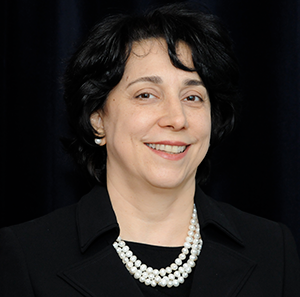Health IT Panel Focuses on Leveling the Playing Field for Women in Healthcare Leadership

Kolaleh Eskandanian, PhD, MBA, PMP, vice president and chief innovation officer at Children’s National Hospital, spoke on gender gaps in healthcare leadership during the 6th annual Health IT + Revenue Cycle Conference hosted by Becker’s Healthcare.
Although women account for nearly half of entry-level jobs in the healthcare industry, female clinician-scientist executives continue to be sparse among healthcare leadership ranks. Less than a third of C-suite roles – approximately 26 percent – are filled by women and tend to focus on human resources or marketing, according to a recent analysis by Becker’s Hospital Review.
Addressing and bridging this gender gap in healthcare leadership was the focus of the recent panel, “Leveling the Playing Field for Women in Healthcare at Macro and Micro Levels,” as part of the 6th annual Health IT + Revenue Cycle Conference hosted by Becker’s Healthcare. Moderated by Alya Ellison of Becker’s Hospital Review, the panel examined the different ways that leading healthcare institutions are working to improve mentorship and leadership opportunities for women to create a more equitable path to the C-suite.
Among those participating in the discussion was Kolaleh Eskandanian, Ph.D., M.B.A., P.M.P., vice president and chief innovation officer at Children’s National Hospital, who noted that some organizations may require one or two cycles of leadership change for more female clinician-scientist executives to reach the C-Suite. Even so, Eskandanian emphasized that the desire and strategy to bridge this gap should be imprinted in the DNA of every major healthcare organization.
“Hopefully, many organizations started thinking about diversity and inclusion years ago. At Children’s National Hospital, this is deeply engrained within our culture and is something that we consciously focus on,” Eskandanian says. “In addition to focusing on inclusion at the leadership level, we also work diligently with medical school graduates in our residency program to ensure that both the micro and macro levels of balance are in place.”
Eskandanian adds that Children’s National Hospital also has developed and implemented a program for physicians and scientists known as W@TCH (Women @ Children’s Hospital) to help address the specific needs of women in academic medicine. Led by Naomi Luban, M.D., vice chair of Faculty Affairs and medical director for the Office for the Protection of Human Subjects, the program began as a series of informal lectures designed to address the challenges faced by women in medicine and academia and, with the help of junior faculty, has expanded to include a yearly “brown bag” seminar series with a formal W@TCH-related Grand Rounds that includes a half-day Career Development Workshop and a growing organizing committee of junior faculty.
Senior W@TCH members, many of whom are division chiefs at Children’s National Hospital, also oversee the selection of faculty members to attend different Association of American Medical Colleges (AAMC) programs including Women in Medicine and Science (GWIMS) Professional Development Seminars for early and mid-level faculty and minorities.
“This incredible program started organically at the hospital and has proven highly successful, so we hope that many organizations can follow the same organic process, which truly demonstrates the kind of leadership we need in order to be problem-solving organizations that lead to positive outcomes,” Eskandanian says.
Eskandanian and fellow panelists Tracy Donegan of MLK Community Health and Amy Schroeder of Lexington Regional Health agreed that, as there are still inequities in healthcare leadership roles, it is up to organizations to acknowledge disparities in order to start a dialogue that creates a more inclusive culture focused on manageable strategic goals that make awareness actionable.



